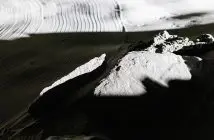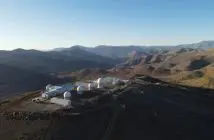
BAE Systems will develop an instrument to analyse ocean data as part of the National Oceanic and Atmospheric Administration’s (NOAA) Geostationary Extended Observations (GeoXO) satellite program.
NASA announced the USD450 million contract on behalf of the NOAA on May 20, 2024. It includes the development of two flight instruments as well as options for additional units. The anticipated period of performance for this contract includes support for 10 years of on-orbit operations and five years of on-orbit storage, for a total of 15 years for each flight model.
The GeoXO Ocean Color instrument (OCX) will monitor US coastal waters, the exclusive economic zone, and the Great Lakes, observing ocean biology, chemistry, and ecology to assess ocean productivity, ecosystem change, coastal and inland water quality, seafood safety, and hazards like harmful algal blooms.
With updates at least every three hours, the instrument will deliver a more frequent and comprehensive view of ocean and coastal conditions than is currently available.
Frequent observations will show daily changes in ocean biology and rapid coastal ocean dynamics. The instrument also will track and assist in the response to climate-driven ocean and coastal ecosystem changes, supporting ecological forecasters, marine resource managers, fisheries, health departments, water treatment managers, and the commerce, recreation, and tourism industries.
The contract scope includes the tasks and deliverables necessary to design, analyse, develop, fabricate, integrate, test, verify, and evaluate the ocean color instrument; support the launch; supply and maintain the instrument ground support equipment; and support mission operations at the NOAA Satellite Operations Facility in Suitland, Maryland. The GeoXO Program is the follow-on to the Geostationary Operational Environmental Satellites – R (GOES-R) Series Program.
Advanced capabilities from GeoXO will help address the changing planet and the evolving needs of NOAA’s data users. NOAA and NASA are working to ensure these critical observations are in place by the early 2030s when the GOES-R Series nears the end of its operational lifetime.
NOAA and NASA will oversee the development, launch, testing, and operation of all the satellites in the GeoXO Program. NOAA funds and manages the program, operations, and data products. On behalf of NOAA, NASA and commercial partners develop and build the instruments and spacecraft and launch the satellites.





